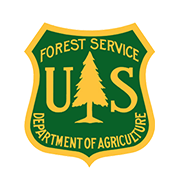Single Publication
Could not determine your location.
Hughes Post-Fire BAER Soil Burn Severity Map Released 02-04-2025
Hughes Post-Fire BAER
Publication Type: News - 02/04/2025 - 11:00
Hughes Post-Fire BAER Soil Burn Severity Map Released
February 4, 2025
USDA Forest Service Burned Area Emergency Response (BAER) specialists recently completed their data gathering and analysis for federal lands in the Hughes Fire burned area to produce a post-fire Soil Burn Severity (SBS) map.
The BAER assessment team used initial remote sensing imagery with their field-validated soils data to develop and produce a map showing soil burn severity levels for the burned area. The SBS is broken into four different classes: unburned/very low (green), low (blue), moderate (yellow), and high (red). For more information on these different SBS classifications, see the BAER Information Brief at: https://inciweb.wildfire.gov/incident-publication/caanf-hughes-postfire-baer/baer-information-briefunderstanding-soil-burn-severity-02-03-2025.
The BAER SBS map and data display categories of unburned/very low, low, moderate, and high soil burn severity in different colors for the different categories. Of the 10,429 acres within the Hughes Fire perimeter, 3,233 acres are non-Forest Service land, 7,196 acres are National Forest System (NFS) land, and 114 acres are unevaluated urban land. Of the 10,315 acres analyzed by the Forest Service BAER team, approximately 62% of these acres are either unburned/very low or low soil burn severity, while 37% sustained a moderate soil burn severity, and about less than 1% were identified as having high soil burn severity.
You may see several types of fire severity and intensity maps produced by different incident management staffs. If they look different for the same fire, it is because they measure different metrics to describe the effects of the fire. Forest Service BAER maps are primarily measures of fire effects on soils. See also Fire Intensity vs. Soil Severity Effects BAER Information Brief at: https://inciweb.wildfire.gov/incident-publication/caanf-hughes-postfire-baer/baer-information-brief-fire-severity-and-fire-intensity-effects-02-02-2025.
Heat from fire changes soil chemistry which in turn affects what will happen during storm events after fires. The team hydrologists, soil scientists, and geologists use the final soil burn severity map to model and predict areas likely to experience flooding, erosion, sedimentation, and debris flows. The BAER team, the US Geological Survey (USGS), Natural Resources Conservation Service (NRCS), National Weather Service (NWS), and the California State Watershed Emergency Response Team (WERT) all utilize the soil burn severity map as an analysis tool to estimate post-fire watershed response to precipitation events. In specific areas that are predicted to have high levels of post-fire response, the team and their partner agencies assess the need for and feasibility of various treatments.
The Hughes Fire SBS map can be downloaded at the Hughes Post-Fire BAER InciWeb site: https://inciweb.wildfire.gov/incident-information/caanf-hughes-postfire-baer under the Maps” tab.
BAER SAFETY MESSAGE: Everyone near and downstream from the burned areas should remain alert and stay updated on weather conditions that may result in heavy rains and increased water runoff. Flash flooding may occur quickly during heavy rain events--be prepared to act and note emergency alerts issued by Los Angeles County. Current weather and emergency notifications for the Hughes Fire area can also be found at the National Weather Service website: www.weather.gov/lox/.
###

 InciWeb
InciWeb